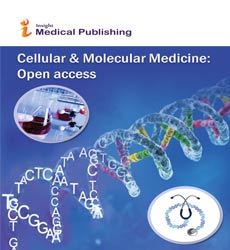Anosmia and Disgeusia in individuals with Covid-19 in the State of Para
Silvana Nobre de Assis Maziviero
Universidade do Estado do Para
Received Date: 2022-05-14 | Accepted Date: 2022-05-20 | Published Date: 2022-05-28Abstract
Objective: Coronavirus in its variant form SARS-CoV-2 originated COVID-19, caused a pandemic scenario. the symptoms may vary on intensity, from mild conditions to ICU admission, like variable fever, cough, respiratory distress. Subsequently, nasal symptoms such as anosmia and dysgeusia were observed and reported in patients, being as important for diagnostic determination as RT-PCR (reverse-transcriptase polymerase chain reaction) and/or chest tomography. Because they are one of the first symptoms in the course of SARS-CoV-2 infection, in the present study we sought to compare the prevalence of olfactory and gustatory dysfunctions in patients with COVID-19 in the state of Pará.
Methods: Seventy patients diagnosed with COVID-19 and changes in smell and/or taste were evaluated using an online form (GOOGLE FORMS), to study this complaint in the population of the state of Pará (amazon region) in 2020, since there is a lack of regionals studies on this subject.
Results: Anosmia and/or Dysgeusia were present in 97.1% of the individuals for 2 weeks (32.9%) or ranging from 30 days to 6 months (32.9%), with a higher prevalence in the age group between 19-30 years. The clinical-epidemiological diagnosis detected 54% of the cases of COVID-19 in the population studied.
Conclusions: The findings support the possibility of using these symptoms as indications of SARS-CoV-2 infection in the Amazon region and population, where the study was performed. Such findings may help in the diagnosis of COVID-19 in remote regions in the absence of RT-PCR and/or access to chest tomography, such as in riverside and indigenous areas.
Keywords: Coronavirus infections, Anosmia, Dysgeusia, Cross-Sectional Studies.
Conflicts of Interest
Authors declared that there are no conflicts of interest.
Open Access Journals
- Aquaculture & Veterinary Science
- Chemistry & Chemical Sciences
- Clinical Sciences
- Engineering
- General Science
- Genetics & Molecular Biology
- Health Care & Nursing
- Immunology & Microbiology
- Materials Science
- Mathematics & Physics
- Medical Sciences
- Neurology & Psychiatry
- Oncology & Cancer Science
- Pharmaceutical Sciences
